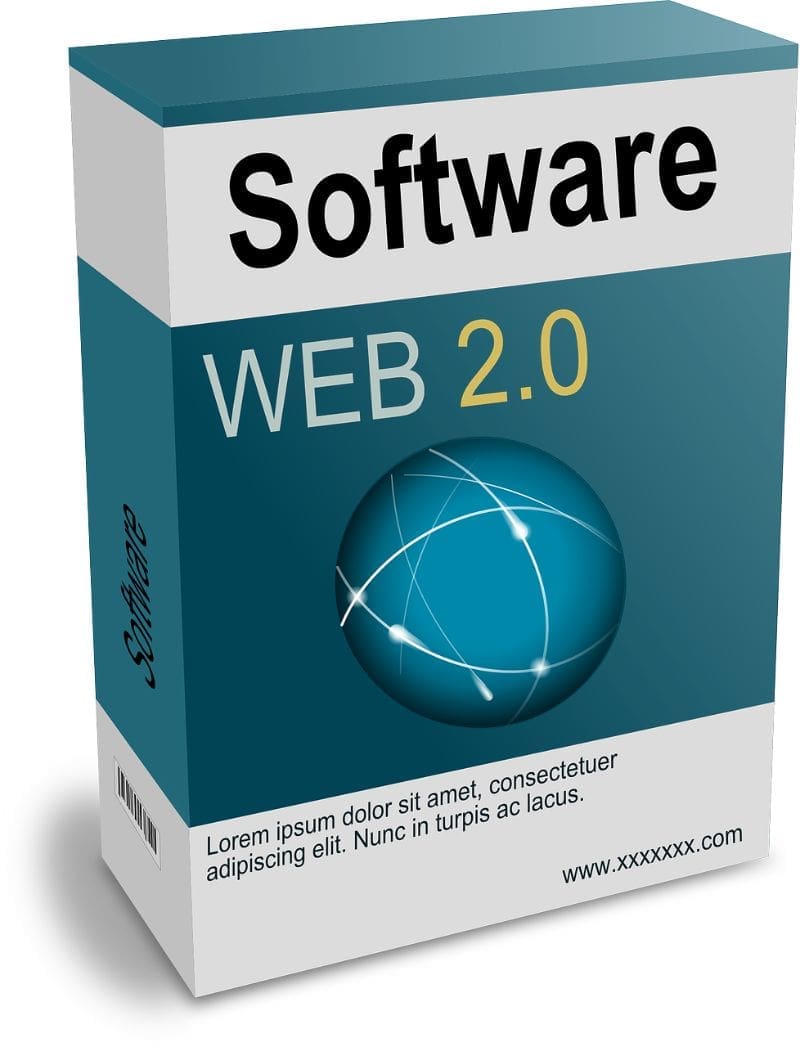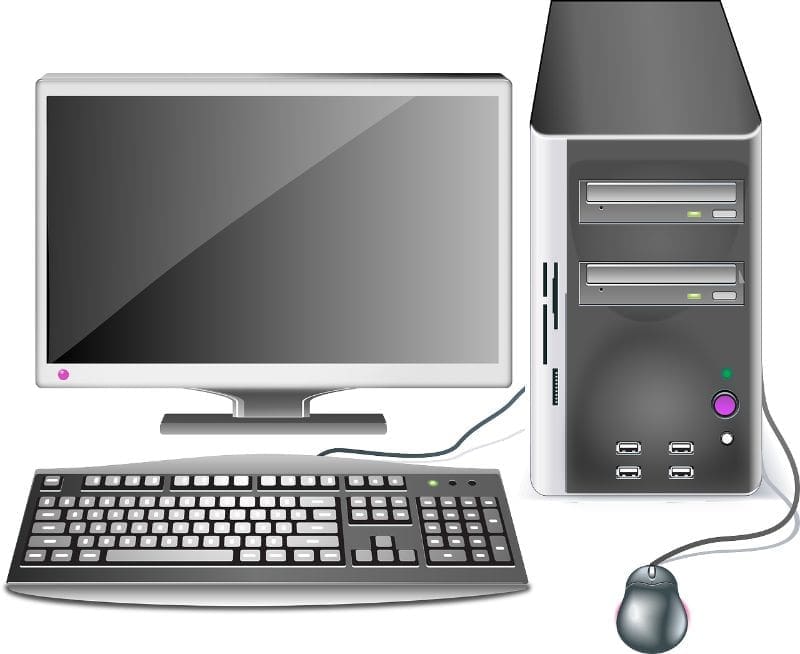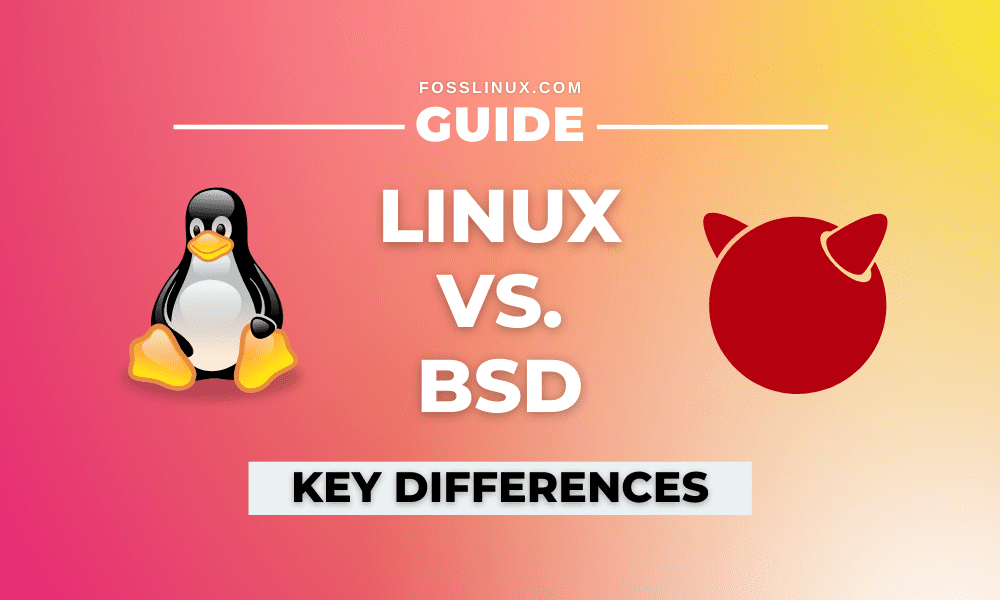Both Linux and BSD (Berkeley Software Distribution) are free, open-source, and based on Unix. Both systems also use many of the same applications and strive towards the same goal – developing the most stable and reliable operating system.
But, despite all the similarities, these are two distinct operating systems with plenty of differences. Keeping this in mind, we have put together a detailed read going over 10 key differences between Linux vs. BSD to give you a better understanding of the two systems.
#1. Linux vs. BSD: Kernel Vs. Operating System
You need to understand that Linux is technically a kernel, whereas BSD is a full-fledged Operating System, which includes its own kernel. But what’s the difference between a kernel and an operating system?
In short, a kernel is a part of the operating system. A kernel merely acts as an interface between applications and hardware. However, the operating system provides an interface allowing users to interact with the hardware.
The Linux kernel alone won’t be able to provide you with a computing experience. This is why we use Linux distributions like Ubuntu or Manjaro that bundles together with other necessary software and a GUI (Graphical User Interface).
On the other hand, BSDs are a complete package shipping with both the kernel and the OS. For example, FreeBSD comes with the FreeBSD kernel and the FreeBSD OS, both of which are maintained as a single project.
As such, if you wish to use FreeBSD, all you need to do is install it, and you are good to go. Unlike Linux, where you first need to go distro hunting, which will decide the overall user-experience.
#2. Linux vs. BSD: Licensing

Linux vs. BSD: licensing
Linux is distributed under the GPL (GNU General Public License) license. This means that you have free access to the Linux kernel and its source code. However, if you choose to modify and distribute it, you will need to release the source code for your modifications.
On the contrary, BSD uses their own BSD License. Users have free access to the OS, but they are not compelled to release the source code if they choose to modify and distribute the code. That being said, developers can release the source code if they like, but there are no legal obligations.
For regular users, these differences in the licensing term won’t actually matter. At the end of the day, both are free and open source. But it has shaped how both systems have developed.
The GPL license allows developers in the Linux community to build on the work of other developers. You have distributions like Linux Mint, which is based on Ubuntu, which is further based on Debian.
However, BSD developers have the freedom to do whatever they want to do with the source code and ultimately turn it into a closed-source project. For example, FreeBSD is available under the BSD license and is free & open-source. However, the OSes used on Playstation 4 and Nintendo Switch, based on FreeBSD, are proprietary and closed-source.
#3. Linux vs. BSD: Control over Source Code

Linux vs. BSD: Control over Source Code
The source code of the Linux kernel is mainly controlled and maintained by Linus Torvalds – the founder and creator of Linux. He gets to decide what new features get included in the next version of Linux and which features (if any) get removed. He is the guy calling the shots.
On the flip side, there is no “single” user in charge of BSD but rather a community of users, a.k.a the “core team” who manages the entire BSD project.
With that being said, it is worth noting that the original BSD OS is currently discontinued. When we use the term BSD, we refer to its descendants like FreeBSD, OpenBSD, NetBSD, and the likes. All these OSes have their own core team, which decides the direction of the project.
#4. Linux vs. BSD: Which is more “Unix-like”?
There is a saying in the community that BSD results from “a bunch of Unix hackers trying to port the Unix system for the PC,” whereas Linux is a result of “a bunch of PC hackers trying to write a new Unix system for the PC.” These two lines can help you better understand the difference between BSD and Linux.
If you are looking for the most Unix-like system, then BSD wins the cake. This is because BSD is the direct derivative of the traditional Unix system.
On the other hand, Linux is loosely based on a Unix derivative – Minix, to be exact, and Linus Torvalds writes most of the code.
#5. Linux vs. BSD: The Core System

Linux vs. BSD: The Core System
There isn’t any part of Linux that can be referred to as the “core” of Linux. Linux is essentially a conglomeration of many smaller systems that combine to create the full Linux experience.
Many people argue that the Linux kernel is actually the “core” of Linux or its base system. But that being said, the kernel can’t do anything without any useful application, which is where this argument falls apart.
That being said, BSD is also a collection of several tools and software that combine to deliver the full experience. But unlike Linux, all these tools are developed and packaged together, so they are considered the core or base system that makes up BSD.
For example, libc, a small part of BSD, is considered a core BSD component.
#6. Linux vs. BSD: Community & Userbase

Linux vs. BSD: Community & Userbase
Both Linux and BSD are blessed with a large community consisting of active users and developers. This includes online forums, subreddits, blogs hosted by fans of the systems, and much more.
If you are a new user and walk into any of these places with a burning question, you can rest assured that someone is active on the platform and will answer it within a couple of minutes to an hour.
In fact, the FOSS community is so strong that this software doesn’t need a dedicated support team – most of the issues are addressed and handled by their fans.
As such, even though you go with Linux or BSD, you can know for certain that you are walking into a community of tech-savvy individuals.
However, in terms of sheer numbers, Linux has a much larger community.
#7. Linux vs. BSD: Software Availability
The availability of modern software and its compatibility with the OS hugely impacts its adaptability and popularity amongst everyday users. When you consider how popular Linux is compared to BSD, it clearly indicates which system offers better software availability and compatibility.
Linux provides a simple and straightforward ecosystem for both developers and users to create and install the software. All apps are available in “pre-compiled” binary packages that the user can download and install on their systems using package managers like APT, DNF, and the likes.
On the contrary, installing software on BSD is much more difficult. First of all, the user needs to download the source code for the program they wish to install from one of the many available ports. Next, they will need to compile the source code on their system.
This extra complicated step of needing to compile the source makes installing the software a big hassle for BSD users resulting in its overall lack of popularity. That being said, some pre-compiled binary package libraries for BSD aren’t nearly as vast as that of Linux.
#8. Linux vs. BSD: Access to Latest Software

Linux vs. BSD: Access to Latest Software
BSD rarely gets access to the latest bleeding-edge software and technologies. However, this isn’t necessarily a bad thing.
Sure, you will be losing out on the new features and functionalities introduced with new technologies. But at the same time, you will also have to deal with more bugs and system errors because there hasn’t been enough time to test the new software thoroughly.
As such, if you believe in the philosophy – “if it ain’t broke, don’t fix it,” then you will appreciate BSD’s slow and steady approach to incorporate new software into its ecosystem. Doing this makes the overall system much more stable and reliable, crucial if you are using it for serious and professional workloads.
On the contrary, Linux has tons of distributions, each having their own approach to embracing new bleeding-edge software.
For example, with Fedora, you get access to all the latest versions of almost every FOSS software as soon as they are available. It is mostly targeted at Linux enthusiasts and developers.
Whereas, on the other side of the spectrum, we have distros like OpenSUSE that supports a long life cycle for each version with a focus on stability and reliability, rather than cramping in new state-of-the-art features.
#9. Linux vs. BSD: System Upgrades
Linux and BSD handle system upgrades in a completely different manner.
Because of how BSD is developed, users can upgrade their entire operating system to the latest version with a single command. It also allows users to download the source code for the new release or whichever build you are looking for and then install them like any other application.
However, with Linux, the process is a bit more complicated. As we discussed, Linux is a collection of different software – you have the Linux kernel, on top of which there is the package manager, tools and software, and a GUI or desktop environment.
You can upgrade all these components, including the kernel, through the package management system. With Linux, you can upgrade the entire installation, whereas, with BSD, you are only upgrading the core system.
But with that being said, there are too many cases where users reported issues upgrading to a newer version of their Linux distro. This mostly happens because of incompatibility between the different components, as all of them are not developed under the same roof and follow different release schedules.
In a nutshell, BSD always plays it safe and offers a secure and stable upgrade to newer versions without any hiccups. This is also possible with Linux with the added advantage of upgrading the entire OS installation. However, it can sometimes run into errors and system crashes.
#10. Linux vs. BSD: Hardware Support

Linux vs. BSD: Hardware Support
Both Linux and BSD support a wide range of hardware, but Linux has a slightly bigger edge in this department.
The hardware support for an OS or any software for that matter is directly related to its popularity. Manufacturers are inclined to make their hardware compatible with the software if more people use it.
Furthermore, if the software has a large enough community of users, including developers, they can create drivers and necessary tools to make it compatible with other hardware.
With Linux being more popular than BSD and having a larger community, it is clear why it has better hardware support.
If you have high-def gaming in mind and want compatibility with the latest graphics cards in the market, you are in better luck sticking with Linux.
Linux vs. BSD: Which One Should You Choose?
By now, you should have a good enough understanding of the differences between Linux and BSD.
As you can see, between the two, Linux is much more popular, which results in other benefits like better hardware support, a bigger community, more developers working on upgrades, and much more.
But that being said, regular users will hardly notice many differences between the two systems. Like in Linux, with BSD, you will use the same desktop environments like GNOME, KDE, XFCE, and the likes.
Furthermore, even though the BSD software repository doesn’t match Linux’s vastness, you still get access to almost all the necessary software and tools you need for regular day-to-day workloads.
In a nutshell, BSD mostly appeals to tech-savvy users looking for a stable and reliable system for professional use. It isn’t bothered by accessing the bleeding edge technologies that are getting introduced in the market.
On the other hand, for regular users looking for a FOSS OS that works out of the box, Linux offers the most intuitive and streamlined solution.
Furthermore, many of the Linux distros like Ubuntu and Fedora are super modern, embracing the latest design trends and software. As such, users who wish to move ahead with the time and don’t mind facing occasional bugs and hiccups will feel right at home with Linux.


1 comment
Finally an almost correct explaination!
There are so many bad guides out there.
The glaring error in this one is claiming that on BSD on has to build from source. One CAN build from source as in most OS’s, and it is very simple to do so (“# make install”), but the recommended way is to install binaries. FreeBSD has over 40,000 ones by now, IIRC. Isn’t that even more than Debian?
Thanks!